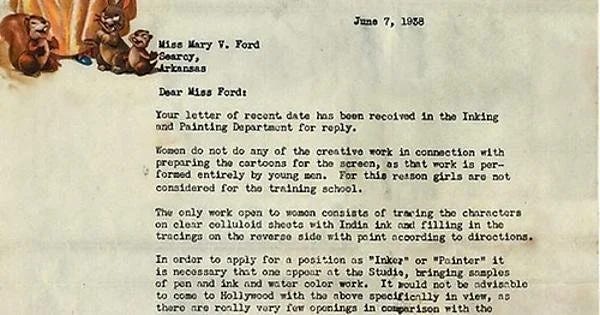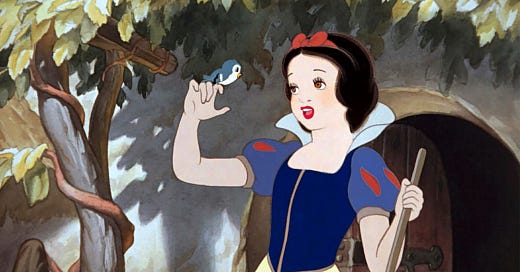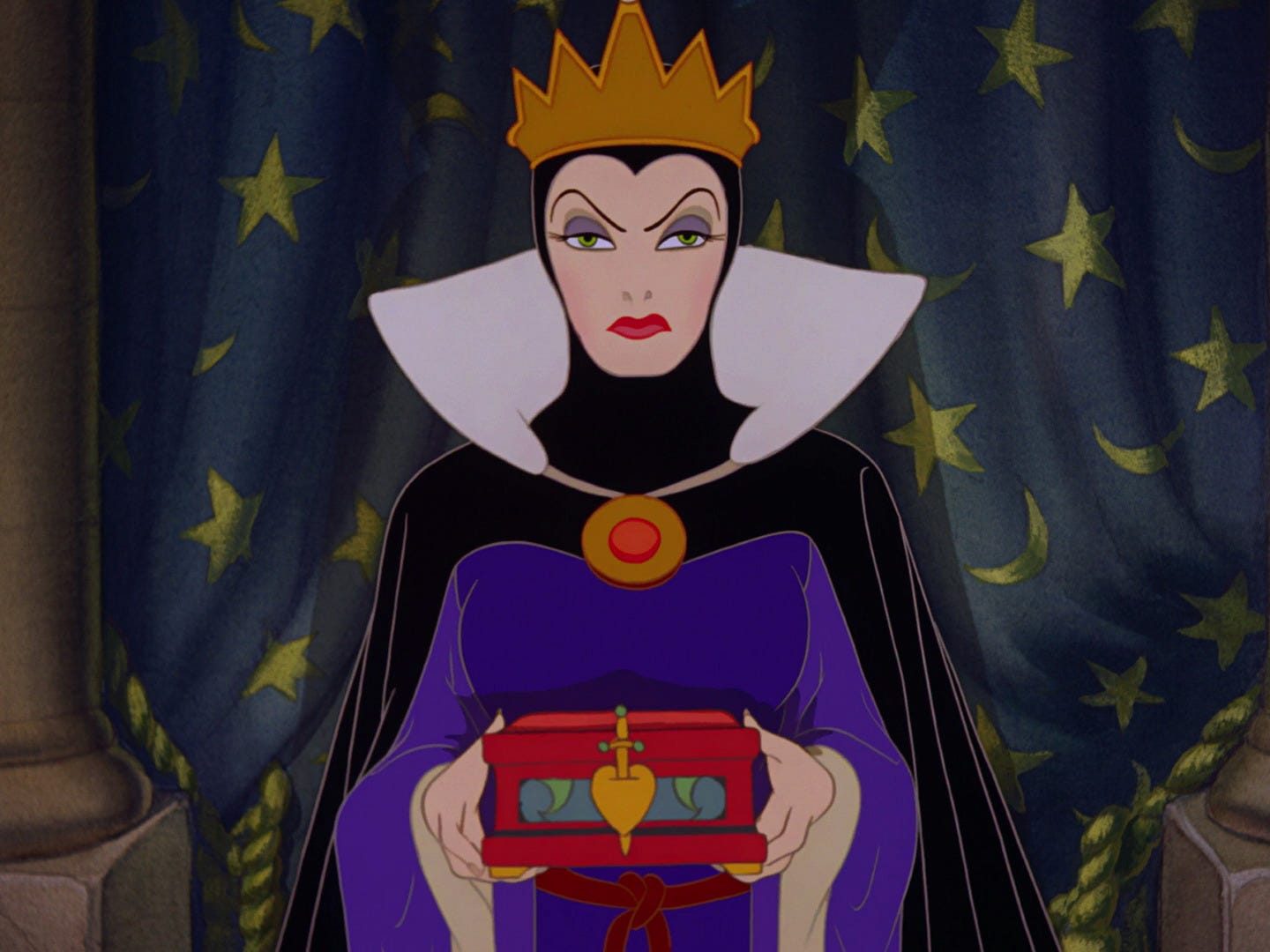Movie, She Wrote: Snow White and Dorothy Ann Blank
Did you know that many of your favourite film classics were written by women? Here's the third instalment of our mini-series looking back at some of our favourites.
Hi! If you’re new to Story Has It, we - Yara and Gillian - share the human stories behind movies, songs, art and books. If you love surprising backstories, and you like a dose of nostalgia mixed with the occasional touch of glam, click here to join in and subscribe!
If you were a woman applying for a job as an artist or writer at Disney in the late 1930s, this (below) is the sort of letter you could expect to receive. It stated clearly, “Women do not do any of the creative work.” It was 1938, so the letter isn’t surprising; what is surprising, is that it wasn’t true.

Women were doing the creative work at that time – there were just very few of them, and they often went uncredited.
There was Bianca Majolie, a Fine Arts graduate and former fashion designer who had produced her own comic strips before joining Disney’s story department in the mid 30s. She helped shape many of Disney’s early classics, and translated the original Pinocchio to English so the studio could adapt it - all while being paid a fifth of what the men were paid.
And there was Grace Huntington, who Disney hired in 1936. She was an accomplished pilot who couldn’t serve in the military because of her gender. At her first story meeting, a security guard wouldn’t let her in because she was a woman. She blew past him into the room, where her male colleagues whistled as she searched for a seat.
“The girl artists have the right to expect the same chances for advancement as men, and I honestly believe that they may eventually contribute something to this business that men never would or could.”
Walt Disney in an understatement to his employees, 1941
Grace also advocated for Disney to hire more women, which is where Dorothy Ann Blank comes in – the sole woman writer credited on Snow White and the Seven Dwarfs.
In the summer of 1936, Walt Disney brought Dorothy into the ‘mouse studio’. Her gender wasn’t the only reason she was an unusual hire – she also wasn’t an artist. At the time, all of the writers used sketches in shaping their plots. Instead, Dorothy’s skills lay in her prose. She was a successful journalist who had worked on several publications and came to them from the Mickey Mouse Magazine.
Dorothy had confidence and self-worth in spades, which were essential traits in a competitive environment where she was in the minority. She dived straight into Disney’s latest and biggest undertaking – their first feature film.

Walt was obsessed with every aspect of Snow White – in large part because he hoped it would save the studio. They were completely out of money and had already spent a million dollars on the film, so every detail mattered. The story department reviewed the plot over and over, cutting scenes for the most concise and compelling storytelling.
Dorothy pared down the script so that not a word was wasted. In her own succinct style, she wrote the scene cards - the filmed text that accompanies the closing scenes:
You can picture the Disney writers’ room as Dorothy would have seen it. She often used a typewriter, which meant she sat a larger desk in the corner of the room. Over the din of chatter, she had a view of all the other writers crammed together, bumping elbows as they busily sketched and wrote. While working on Snow White, she noticed one colleague kept looking at her.
Joe Grant was a caricaturist whose unique skills had led him to a spot in the story department. While he was working, he seemed to be studying Dorothy as his pencil moved on the page:
Most new hires would have shied from his gaze, afraid to disturb the dynamics of the story department and possibly become the target of pranks, but Dorothy was rarely afraid of anyone. “What are you doing?” she asked him bluntly when she noticed him watching her.
“You are an inspiration,” Joe replied with a smile, but Dorothy was not so easily mollified.
“But why are you sketching me?” she demanded.
“I’m modeling your face for one of our characters in Snow White.”
“Which one?”
“The evil queen,” Joe replied curtly.
Dorothy burst out laughing—his answer had been so unexpected—and soon Joe was laughing too. At last Dorothy said, “At least I’m not the old hag!”
Excerpt from ‘The Queens of Animation’ by Nathalia Holt, 2019
So, along with her groundbreaking credit as a writer, Dorothy’s distinct features also have a permanent place in Snow White’s history.
If you enjoyed this backstory, we’d really appreciate it if you share it and subscribe to follow along. We’d love to have you as part of our backstory gang!










We all need to be so grateful to the strong women who went before us and caused waves in male dominated fields. And we all have a responsibility to keep causing waves!
I had no idea a about this! It’s fascinating. I can definitely see a resemblance, especially in the face shape… also I was hoping him sketching here would be the beginning of a beautiful rom-com! Lol